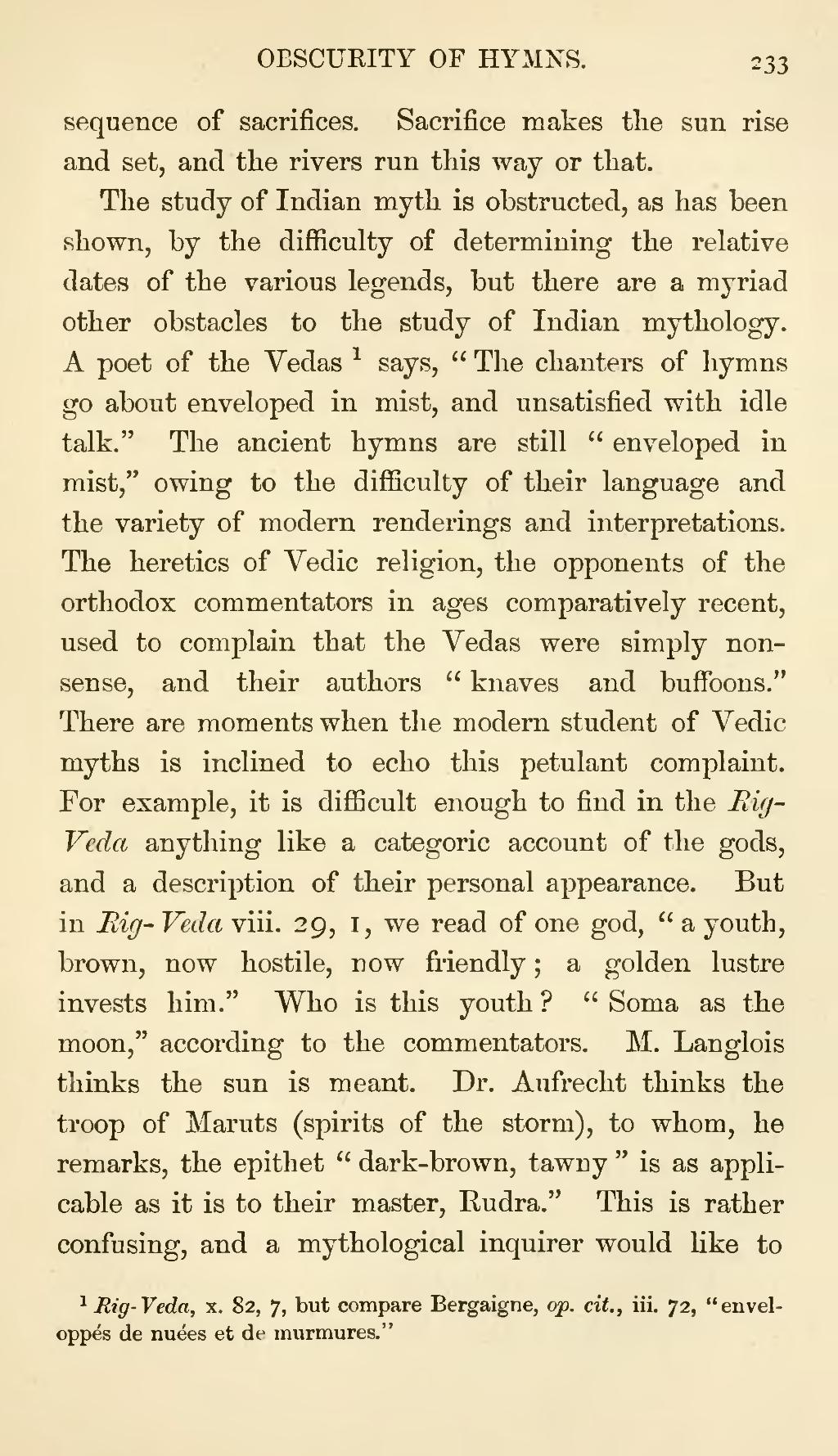sequence of sacrifices. Sacrifice makes the sun rise and set, and the rivers run this way or that.
The study of Indian myth is obstructed, as has been shown, by the difficulty of determining the relative dates of the various legends, but there are a myriad other obstacles to the study of Indian mythology. A poet of the Vedas[1] says, "The chanters of hymns go about enveloped in mist, and unsatisfied with idle talk." The ancient hymns are still "enveloped in mist," owing to the difficulty of their language and the variety of modern renderings and interpretations. The heretics of Vedic religion, the opponents of the orthodox commentators in ages comparatively recent, used to complain that the Vedas were simply nonsense, and their authors "knaves and buffoons." There are moments when the modern student of Vedic myths is inclined to echo this petulant complaint. For example, it is difficult enough to find in the Rig-Veda anything like a categoric account of the gods, and a description of their personal appearance. But in Rig-Veda viii. 29, 1, we read of one god, "a youth, brown, now hostile, now friendly; a golden lustre invests him." Who is this youth? "Soma as the moon," according to the commentators. M. Langlois thinks the sun is meant. Dr. Aufrecht thinks the troop of Maruts (spirits of the storm), to whom, he remarks, the epithet "dark-brown, tawny" is as applicable as it is to their master, Rudra. This is rather confusing, and a mythological inquirer would like to
- ↑ Rig-Veda, x. 82, 7, but compare to Bergaigne, op. cit., iii. 72, "enveloppés de nuées et de murmures."
